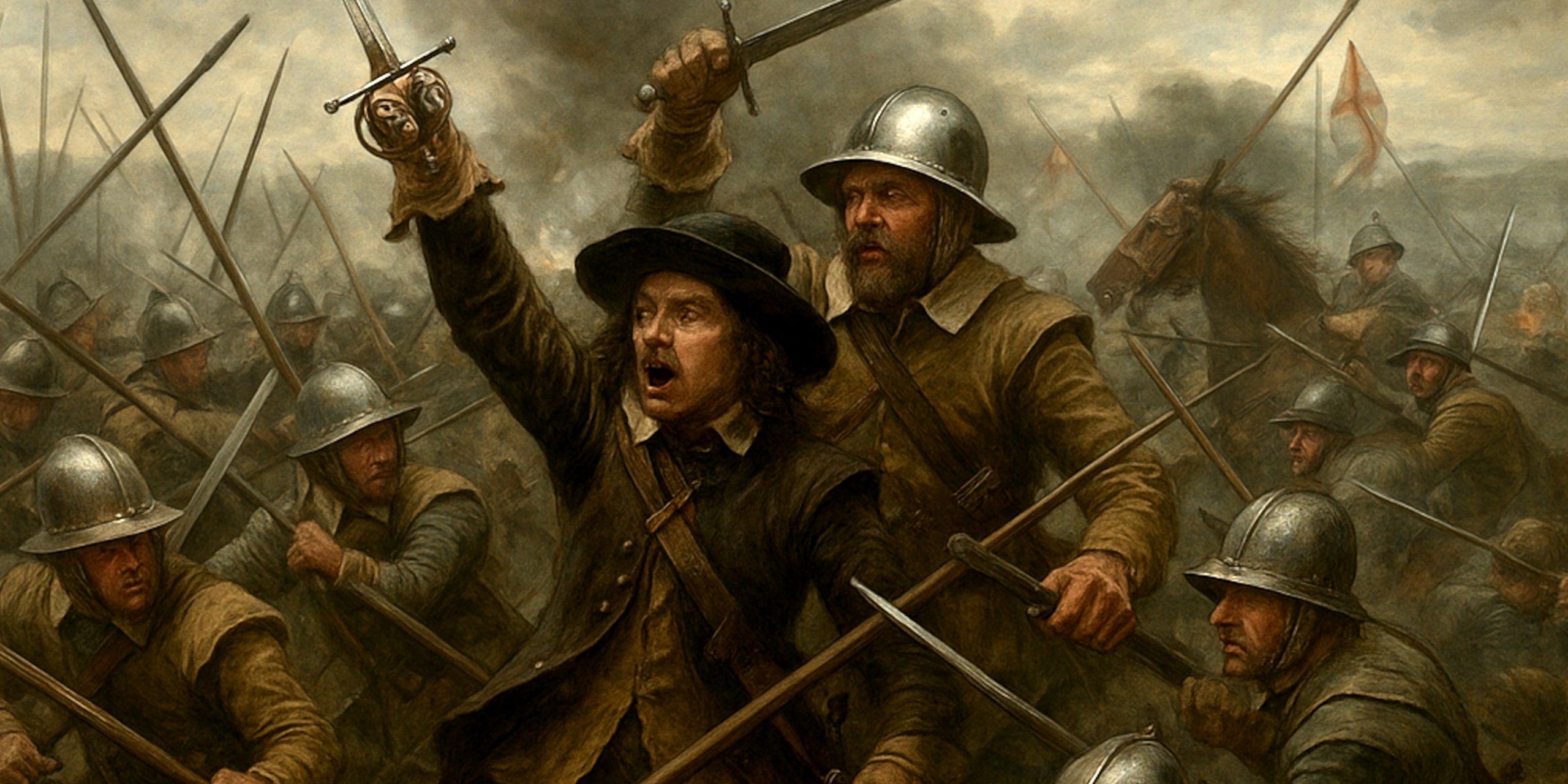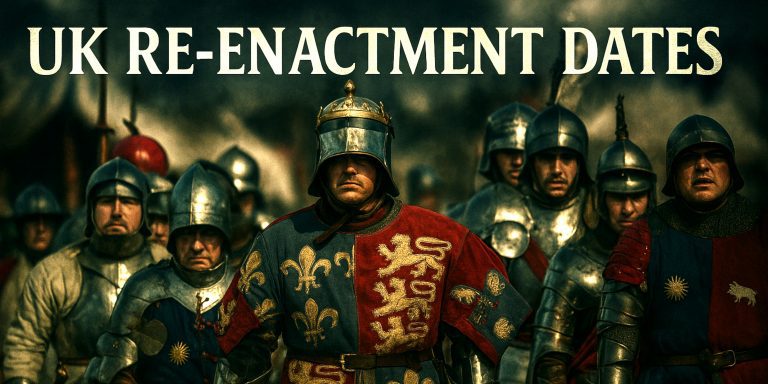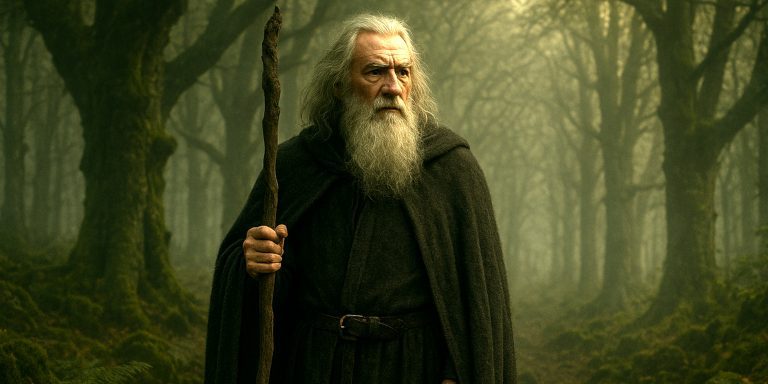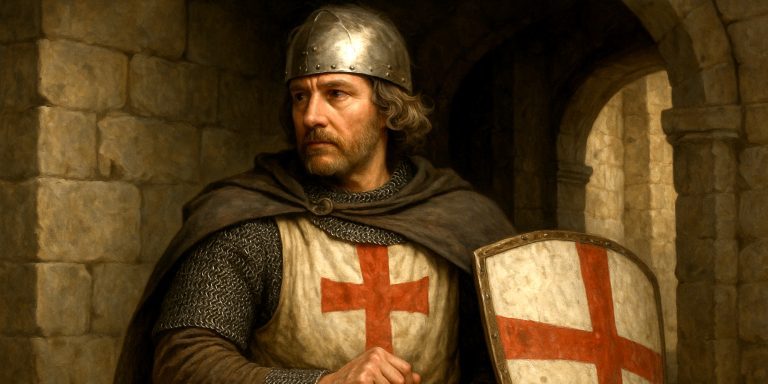
The Battle of Worcester, fought on 3 September 1651, was the final clash of the English Civil Wars. It saw the forces of Charles II attempt to regain the throne, only to be decisively defeated by Oliver Cromwell’s New Model Army. The battle cemented Parliament’s control of England and forced Charles into exile for nearly a decade.
Background
After his father’s execution in 1649, Charles II had sought support in Scotland, where he was crowned in 1651. Backed by Scottish Royalists, he marched south into England, hoping to spark a widespread uprising against Parliament. Worcester was chosen as a defensible stronghold, lying at the junction of the Severn and Teme rivers. Cromwell, anticipating this move, pursued Charles with overwhelming force.
Forces
The confrontation brought together Royalist and Parliamentarian troops in a decisive contest.
Comparative Strength
| Side | Estimated Troops | Key Leaders | Notes |
|---|---|---|---|
| Royalists | 12,000 | Charles II, Duke of Hamilton, Lord Wilmot | Mainly Scottish troops, supplemented by English Royalists. Morale uneven. |
| Parliamentarians | 28,000 | Oliver Cromwell, Thomas Fairfax (nominal), John Lambert | Experienced New Model Army veterans, reinforced by militia and cavalry. |
Leaders and Troop Composition
- Royalists
- Charles II: figurehead and commander-in-chief.
- David Leslie, Duke of Hamilton: Scottish commander.
- Lord Wilmot: cavalry leader.
- Army composition: 8,000 infantry (largely Scottish), 4,000 cavalry.
- Parliamentarians
- Oliver Cromwell: commander-in-chief.
- John Lambert: cavalry commander.
- Fleetwood, Whalley, and Ingoldsby: led divisions.
- Army composition: 18,000 infantry, 10,000 cavalry and dragoons.
Arms and Armour
Royalists
- Infantry: pikes, matchlock muskets, broadswords and Scottish basket-hilted swords.
- Cavalry: cavalry sabres, pistols, carbines, and targes (Scottish officers).
- Armour: some steel breastplates and helmets, though often limited to officers.
Parliamentarians
- Infantry: muskets with plug bayonets, pikes, mortuary swords (favoured by officers).
- Cavalry: backswords, wheel-lock pistols, and carbines.
- Armour: buff coats, steel helmets, and cuirasses, particularly in the heavy cavalry.
Archaeology
Excavations in Worcester and the surrounding fields have uncovered musket balls, sword hilts, and fragments of armour. Skeletons bearing signs of battlefield wounds have been found in mass graves, giving insight into the brutality of the fight. The site of Powick Bridge, contested during the battle, has produced evidence of skirmishes, including cavalry equipment and spent ammunition.
Battle Timeline
- Morning, 3 September 1651: Cromwell begins a multi-pronged assault, crossing both the Severn and Teme rivers to surround Worcester.
- Midday: Parliamentarian forces breach Royalist positions at Powick Bridge after heavy fighting.
- Afternoon: Royalists launch counterattacks from the city walls but are gradually pushed back by Parliamentarian infantry and artillery.
- Late afternoon: Cromwell leads a final assault on Worcester itself, storming the Sidbury Gate and driving Royalists into the streets.
- Evening: Charles II flees with a small escort, beginning his long escape to France. Royalist resistance collapses and thousands are taken prisoner.
Contemporary Quotes
- Oliver Cromwell wrote to Parliament: “The dimensions of this mercy are above my thoughts. It is, for aught I know, a crowning mercy.”
- Charles II, recalling his escape: “I got into a great oak, and there I sat all the day, whilst the soldiers went up and down in the woods searching for me.” (the origin of the Royal Oak story).
Outcome and Legacy
The Battle of Worcester ended the English Civil Wars. Royalist hopes of reclaiming the throne collapsed, and Charles II became a fugitive, eventually escaping abroad. Cromwell emerged with unmatched authority, soon to take the title of Lord Protector. Worcester itself suffered greatly, with plunder, executions, and the loss of its civic freedoms.
The battle is often referred to as “Cromwell’s crowning mercy”, a phrase that underlined both his sense of divine favour and the finality of Royalist defeat.
The Seven Swords Takeaway
The Battle of Worcester was the final act in a turbulent era that reshaped the monarchy, religion, and politics of Britain. Its archaeology and written accounts continue to provide a vivid picture of one of the most decisive days in English history.
Watch the documentary:



